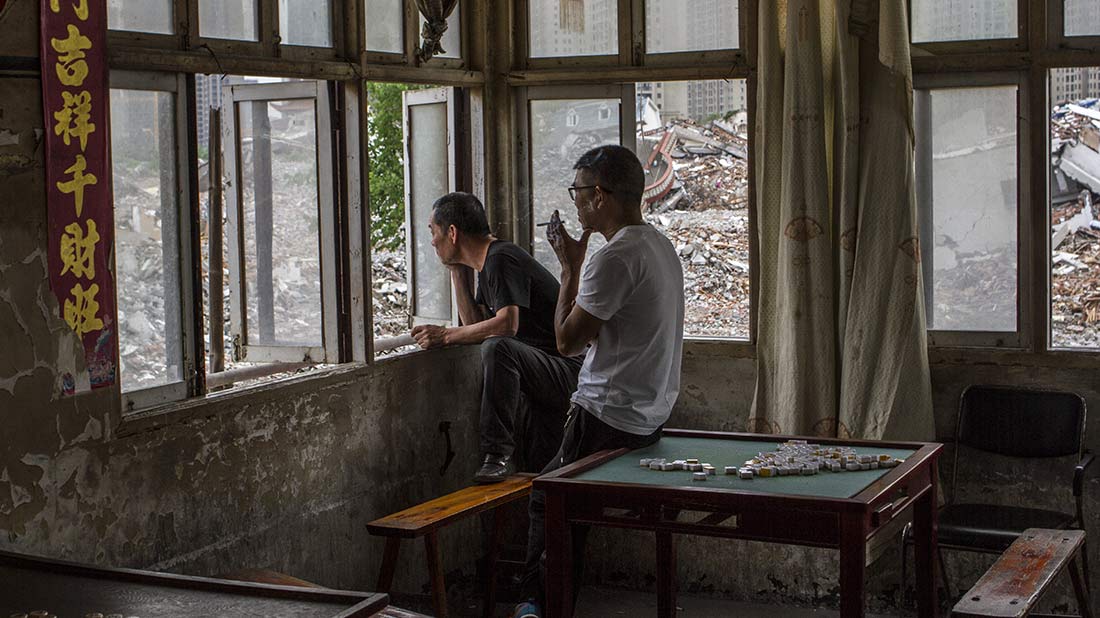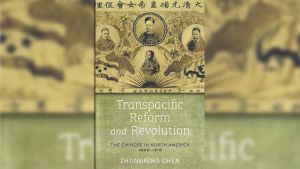
Rural Transformations and Urbanisation: Impressions from the Ningbo International Photography Week
On 27 October 2018, the Third Ningbo International Photography Week opened at the Dongqian Lake Art Centre. Despite the suggestion in its name, the Festival ran significantly longer than a week—until 5 December. The event was curated by photographer Fu Yongjun, currently a lecturer at the Zhejiang University of Media and Communications, but for many years a photojournalist and editor at the Hangzhou newspaper Dushi kuaibao (City Express) and an accomplished photographer. This year’s overarching theme was Village Images (xiangcun yingxiang), divided into 12 sub-themes (see below for examples). It displayed works by some 300 Chinese photographers, and also included images taken by foreign photographers in China over the last century. The call for contributions was posted on several websites and platforms—such as Jinri toutiao, one of the largest mobile content platforms in China today—and thus received a lot of interest from amateurs, established photographers, artists, and students. Fu Yongjun also invited celebrated photographers such as Zhang Xinmin—whose photographs from Liukeng village, Jiangxi province, were originally published in book form in 2000—and Wang Yong, who has documented photo studios and photographic practices in the countryside. Zhang Xinmin’s black-and-white images have become iconic representations of the dramatic changes of village life during the reform period. In Imperial times, Liukeng was a rich village with successful merchants and a large number of literati (jinshi), but is today poor and marginalised with a large segment of the population engaging in migrant work in urban areas. The Photography Week’s opening weekend included conversations with, and talks by, Zhang Xinmin and Taiwanese photographer Ruan Yizhong, who is well known for his work documenting rural transformations and urbanisation in Taiwan.

Through their images, the exhibition’s photographers revealed both continuities and rapid changes. They depicted traditions, social and economic life, and rapid developments in villages in different parts of China—including Guizhou, Yunnan, Guangzhou, Zhejiang, Hubei, Shanxi, Sichuan, Shandong, and Xinjiang—with a particularly large number of contributions coming from Zhejiang. Sub-themed exhibitions included Inheritance, addressing different types of handicraft and traditions, and Country Fair, focussing on the thriving and diverse local markets, and their cultural and religious contexts in the midst of recent changes. Another of the sub-themes focussed on villages in Songyang, Zhejiang, where local photographers have documented the rich local cultural and social life over a number of years. In preparation for the festival, Fu Yongjun brought a group of interested photographers, scholars, and young people to Hengkantou, a ‘red’ village in Ningbo with a strong revolutionary heritage that has become known for its successful economic modernisation. They spent an intensive week documenting different aspects of the village, such as rural leadership, economic changes, and also cultural and religious beliefs and practices.
Several of the sub-themes addressed different aspects of rural transformation, with a particular focus on how villages have been impacted by patterns of urbanisation that have given rise to the phenomenon of ‘villages embracing the cities’ (xiangcun baowei chengshi) and ‘villages in the city’ (cheng zhong cun). One exhibition called Scenes (changjing) included works by 14 photographers who documented physical and visual changes with respect to architecture, the emergence of new kinds of landmarks and monuments, and advertisements, signs, and slogans. One exhibition entitled Urban and Rural (cheng xiang) included works by 15 photographers who documented social and physical encounters between villages and cities. In many parts of China, it is not always so easy to distinguish between urban and rural places—in the outskirts of cities one often finds semi-rural spaces and life co-existing with, or rapidly being engulfed by, city life and high rise buildings. In a series called Temporary Vegetable Farmer (linshi cainong) photographer Luo Jinqing documents farmers who use small plots of land left between new urban buildings to grow vegetables. This series was motivated by his own experience of living in such in-between spaces and buying vegetables from elderly farmers who maintain their attachment to the land and persist in cultivating small plots.



Several photographers trained their cameras on a recent trend of demolitions of entire villages in Zhejiang province. Dong Pin documented the demolition of a village outside of Leqing that only took two months to accomplish. Her photographs of people sitting on the ruins of their homes or looking out from their soon to be demolished houses are imbued with emotional distress and displacement brought about by rapid urbanisation and its non-transparent practices. Another photographer, Liu Yanfeng, documented life in a village outside of Lin’an before its demolition. The speed of demolitions in the city has given rise to the special term ‘Lin’an speed’ (lin’an sudu). Tao Lina’s photographs document the changes of a village in Taizhou as a result of the establishment of a so-called economic development zone and the construction of a new village.

In another sub-theme, Spring Breeze (chunfeng), young photographers born in the 1990s provide new artistic interpretations of village life and urbanisation. Zheng Haoying, a photographer from Hangzhou, exhibited a series called Empty Chairs depicting forgotten villages in the city. Whereas in the sub-theme Long Scrolls (chang juan), photographers were given a one-metre-long paper roll to fill with images of one village. Chen Jianxin, one of those participating, documented urbanisation around Leqing and people’s attachment to the land. This is clearly shown in one of his photos, where an ancestral hall is surrounded by high rises and factories. This is a common sight in the Wenzhou area, where lineages remain strong and ancestral halls are preserved and remain central to community life.
The photo festival showed that the countryside remains a source of deep attachment and inspiration for Chinese photographers who are very concerned about rural developments. It is also obvious that cultural and religious life holds a fascination, although many photographers also addressed social and economic changes and challenges to traditional life, including urbanisation itself.





